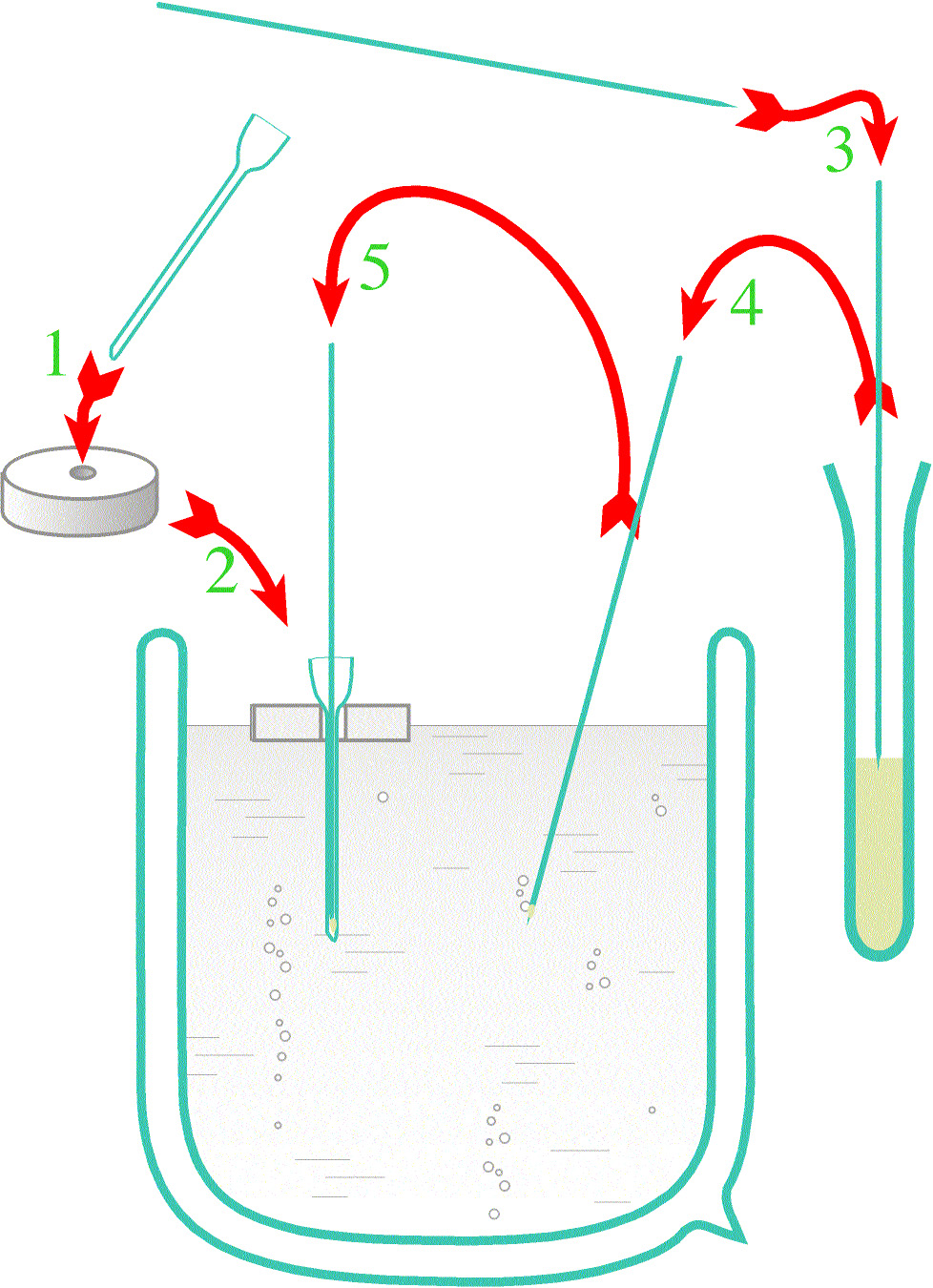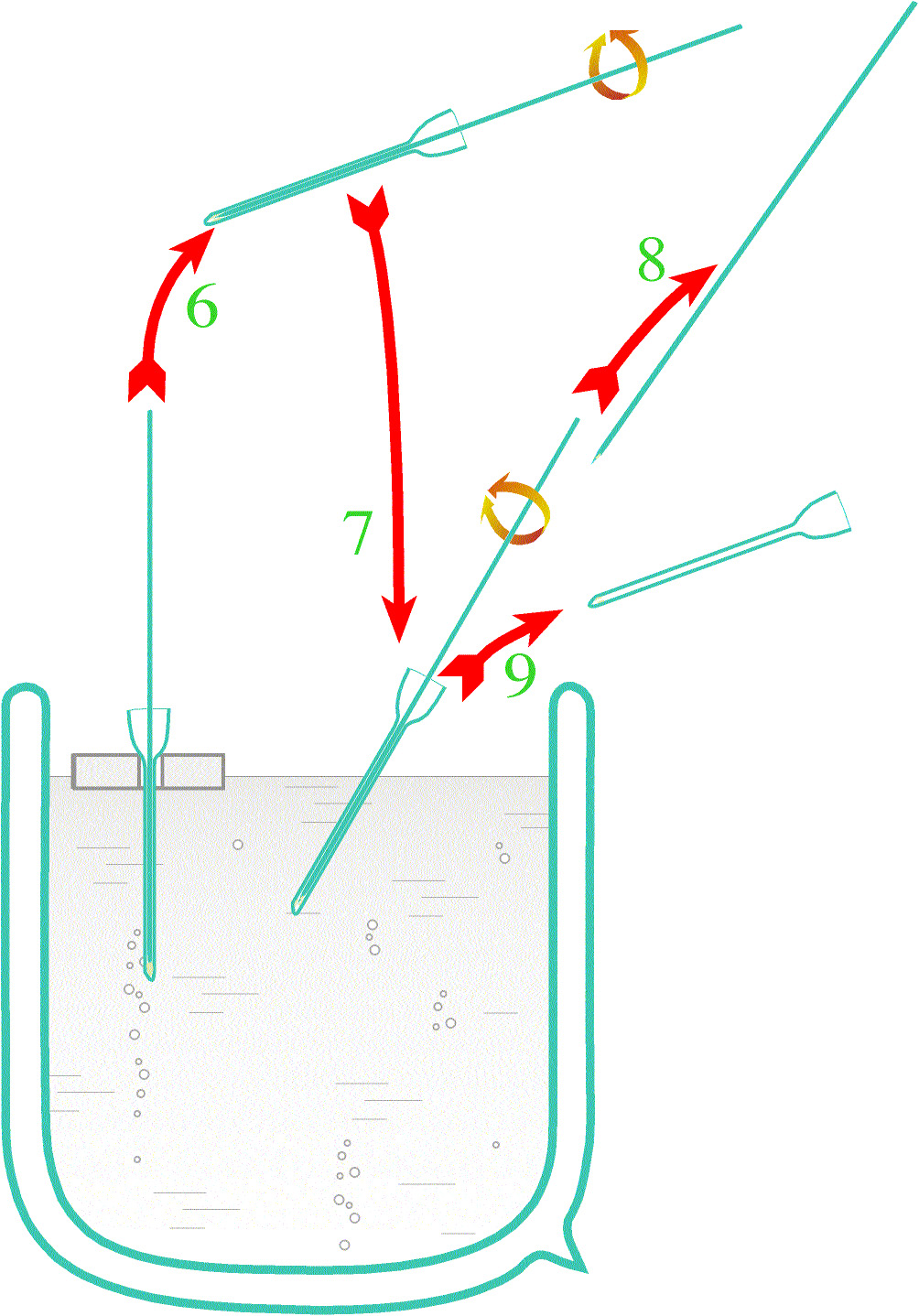 |
|
||||||||||||
 |
|
||||||||||||
To mount a small crystal of a highly air-sensitive substance for xray diffraction measurements at low temperatures, it had to be made to stick inside the sealed tip of a capillary with a smudge of vaseline, after which the capillary would be cut and sealed on the other end at a prescribed distance from the mounted crystal with a minitorch.Care had to be taken, that the crystal was not subjected to any mechanical tension, because this would have made it useless for the measurements. Pushing the crystal through the length of the capillary would have led to such tension if the inner capillary walls had been smudged with vaseline. Therefore, care had to be taken that the vaseline used to position the crystal was applied to the inside of the sealed tip without smudging the inside of the rest of the capillary while transporting the vaseline to the tip.
Here is one way to achieve this:
1. Introduce a capillary with sealed tip into an appropriately perforated styropore disk. 2. Float the styropore disk with the capillary on liquid nitrogen in a Dewar jar. 3. Take a glas rod thin enough to fit inside the capillary, and smudge its tip lightly with vaseline. 4. Dip the smudged tip of the rod into the liquid nitrogen and allow for the vaseline to freeze and acquire liquid nitrogen temperature. 5. Introduce the frozen tip of the rod quickly into the capillary till the tip of the rod is at the lower end of the capillary.
6. Lift the capillary together with the rod inside it out of the liquid nitrogen, and allow it to acquire ambient temperature. Then twirl the rod inside the capillary to let the softened vaseline smudge onto the inside of the tip of the capillary. 7. While continuously twirling the rod, introduce the capillary with the twirling rod inside it back into the liquid nitrogen to freeze the vaseline. It is important that this happens while the rod is twirled, so as to avoid that the rod sticks fast to the capillary when the vaseline freezes again. 8. When the vaseline is well frozen, the rod can be extricated. 9. The capillary can also be taken out of the liquid nitrogen. It is now smudged on the inside with vaseline only at the tip, because the vaseline on the tip of the rod had been in frozen state when passing the length of the capillary on the way in as well as on the way out. This method was successfully used for many years and proved quite adequate for mounting crystals of many metal-organic compounds for low-temperature xray diffraction measurements.
© Waruno Mahdi 1979, 1998, 2000